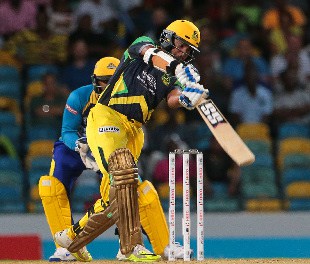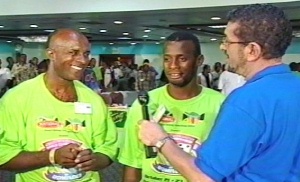Dibia DREAM STEM Sport Program Recognized During National Physical Fitness Month

SOUTH FLORIDA – May is National Physical Fitness Month and we had the opportunity to meet Brandon Okpalobi-Executive Director of Dibia DREAM. Brandon shared his perspective with us about STEM and Sports.
Q: How does STEM influence the sports kids love?
A: STEM and sports go hand in hand. The scientific aspect of sports could change the way athletes compete. The Sports world had recently looked at analytics and other scientific methods to enhance athlete performance and outcomes of games.
We teach our STEM in some of our modules from the sports lenses because its relatable to youth because they love sports. Today, parents and youth are deciding on which sports they will compete in because of STEM or health and other reasons.
Q: What is some Stem in Sports program that Dibia Dream offers?
A: We partnered with the University of Miami and implemented their TEAMS Curriculum into our program. An outreach of CRSS is the curriculum development of Teaching Excellence, Achievement, and Motivation through Sports (TEAMS).
The vision of the TEAMS curriculum is to be a tool in assisting elementary school students to understand that sports, as well as academics, are both intertwined in daily life. When ratios and percentages are linked to batting averages; and a written expression exercise is tied to football plays, the students understand how academics are relevant to their own lives.
The TEAMS curriculum has been created to be user-friendly and easy to follow for the most novices of teachers as well as a guide for the more experienced.
The curriculum is divided into units, each meant to last for a 5-day period. Each unit is an independent entity and can be used in any order, giving the teacher and student freedom of choice to decide which sport they would like to focus upon for the week.
The curriculum contains 30 units, 28 consists of sports themes and two, folk dancing and circus, are considered non-sport activities. Each unit is divided into three levels: kindergarten through first grade, second through third grades and fourth through fifth grades. Each day is comprised of one 45-minute physical activity and one 45-minute academic lesson. Each lesson follows the guidelines of the Sunshine State Standards endorsed by the Florida Department of Education and covers all sports.
Q: What are the advantages of teaming together STEM with Physical Fitness?
A: The primary objective of this curriculum is to reach each student academically through his or her sports interests. Each student comes to us with a special gift. It’s our responsibility to seek out each student’s uniqueness and positively foster their growth. When an individual’s strength is utilized and enhanced, the weaknesses tend to disappear. When the shortcomings of a student are emphasized, the student’s innate gifts are never allowed to be shown. It is up to us, to unwrap the potential of each of your students in his or her way.
Recognizing sports’ broad appeal among youth across class, gender, and ethnic groups, and building on current knowledge about how young people learn, the exciting and innovative new program incorporates sports themes in the school curriculum and classroom pedagogy.
The principle that when students are taught educational concepts in a manner that is meaningful and important to them, they will more eagerly and completely master, and retain them, is both simple and time-tested. While this fundamental principle does not represent everyday practice in the typical American public-school classroom, there are some excellent examples of this principle at work with sports. In some classes, teachers have developed strategies to use sports to teach physics, mathematics, and writing skills.
There are other examples of using sports in teaching several core subject matter at both the secondary and postsecondary levels. Unfortunately, such examples are atypical and isolated, with the result that they rarely extend beyond the classrooms of uniquely innovative teachers.
These strategies, while useful, have not become part of school-wide or systemic reform efforts.
To harness the potential for comprehensive application of this type of teaching and learning strategy, the University of Miami Center for Research on Sport in Society (CRSS) has developed–a standards-based curriculum—TEAMS (Teaching Excellence Achievement and Motivation through Sport) for kindergarten through fifth grade.
TEAMS is designed to capture children’s natural interest in and enthusiasm for sports by embedding instruction in core academic subject matter (reading, writing, mathematics) into a sports context as a means of improving student motivation, engagement, and achievement.

We believe that this TEAMS curriculum package represents a significant new educational toolbox. In the hands of dedicated and skilled teachers, the TEAMS curriculum provides schools with a comprehensive framework for engaging and motivating all students to learn and perform at high standards.
Q: What advice do you have for kids and adults who are looking to get more hands-on with STEM?
A: Come out to STEM Saturdays. We engage the youth, families, and community through STEM each month. If you are not able to make it to a STEM Saturday, meet with your school officials and ask them about adding more STEM in the curriculum.




